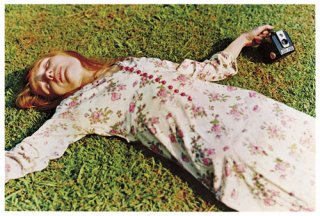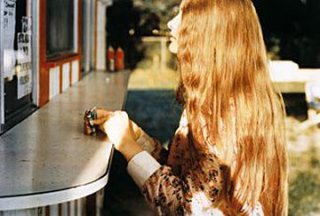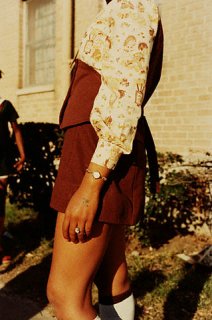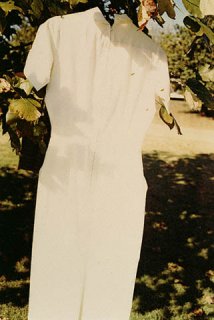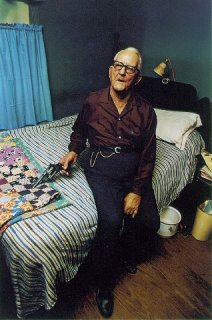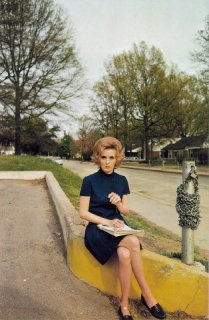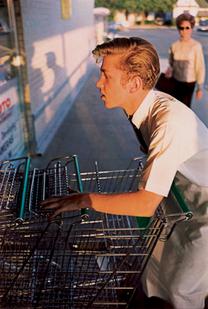Biography: By Stanley Booth
Sept. 7, 1999 -- William Eggleston, now 60 years old, seems securely attached to the title "Father of Color Photography." Maybe the word "color" should be modified by "art" or "artistic," because of course he didn't invent the process. There have been those, however, who would deny that Eggleston's photography has much of anything to do with art.
I met Eggleston in Memphis in the early '60s, shortly after he had come there from his native Mississippi. He was already reputed to be a "serious" photographer. His progress over the decades, however slow and frustrating it's seemed at times to him, has been astonishing. The prince of a matriarchal Southern empire (his mother, two sisters, one wife and many female admirers), he has moved with assurance all along, paying scant heed to naysayers.
One afternoon in 1967, Eggleston, a beautifully groomed and attired young man with dark hair and eyes, dropped in on John Szarkowski, then curator of photography at the Museum of Modern Art, with a suitcase of color slides. It was as if Eggleston was turning himself in to the authorities. A result of this meeting, nine years later, was Eggleston's one-man show of color photographs at the MoMA, only the second in its history. In his introduction to "William Eggleston's Guide," a hardcover book published by the museum to accompany the show, Szarkowski referred to Eggleston's pictures as "perfect," to which the highly offended New York Times art critic Hilton Kramer responded, "Perfect? Perfectly banal, perhaps. Perfectly boring, certainly."
The MoMA show included such images as a dog drinking from a mud puddle, shoes under a bed, a child's tricycle, a tile shower and a kitchen oven. Maybe Kramer figured if he wanted to see a pile of shoes, he could look under his own bed. Others have objected to the subject matter of Eggleston's photographs -- one compared Eggleston's work unfavorably with Ansel Adams' big shots of such things as moonlight on mesas. Adams' subjects are magnificent but have little to do with most people's daily lives. Eggleston's work is dedicated to showing the beauty, humor and horror that surround us at all times and in all places.
An important key to Eggleston's underlying meaning is his admiration for Paul Klee and Vassily Kandinsky. As did these two good-humored masters, Eggleston produces works that are at once, in his phrase, "like jokes and like lessons." It would be a mistake to overemphasize the influence of Klee and Kandinsky on Eggleston -- even calling it an influence goes too far. It's more of an affinity, comparable to the one he shares with musicians as disparate as Satie and Ketelby. (Eggleston is also a musical composer and performer, but that's a topic for another day.)
Growing up in comfortable circumstances on a cotton plantation in Sumner, Miss., Eggleston took his first pictures when he was around 10, using a focus-free snapshot camera, the Brownie Hawkeye. "Everything I photographed blurred, looked horrible," he remembers.
Eggleston's father died in the Pacific during the Second World War, and much of Eggleston's nurturing consequently fell to his maternal grandfather, Judge Joseph Albert May, who died when Eggleston was 11. "He took pictures for a hobby, so I had his Contax and Leica IIIA at home," Eggleston says.
Eggleston attended a military-style boarding academy, Webb School in Bell Buckle, Tenn. His memories of the place are not pleasant: "One of the older students used to tell me, 'Eggleston, I don't know whether to call you "sh*t-t*t" or "t*t-sh*t."'" But he had a friend there named Tom Buchanan, who, later, when they were both attending Vanderbilt University, "marched me to the store and made me buy a camera and developer."
In the words of the brief biographical sketch in the "Guide," Eggleston "matriculated at, and on occasion attended, Vanderbilt University, Delta State College, and the University of Mississippi." At Ole Miss, around 1962, he saw for the first time the work of Cartier-Bresson, his initial inspiration: "A photographer friend of mine bought a book of Magnum work with some Cartier-Bresson pictures that were real art, period. You didn't think a camera made the picture. Sure didn't think of somebody taking the picture at a certain speed with a certain speed film. I couldn't imagine anybody doing anything more than making a perfect Cartier-Bresson. Which I could do, finally."



